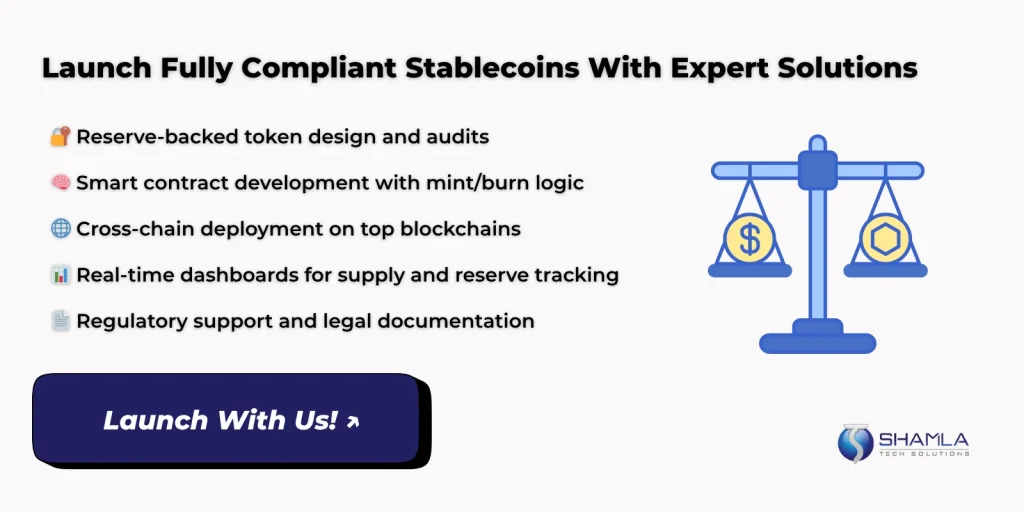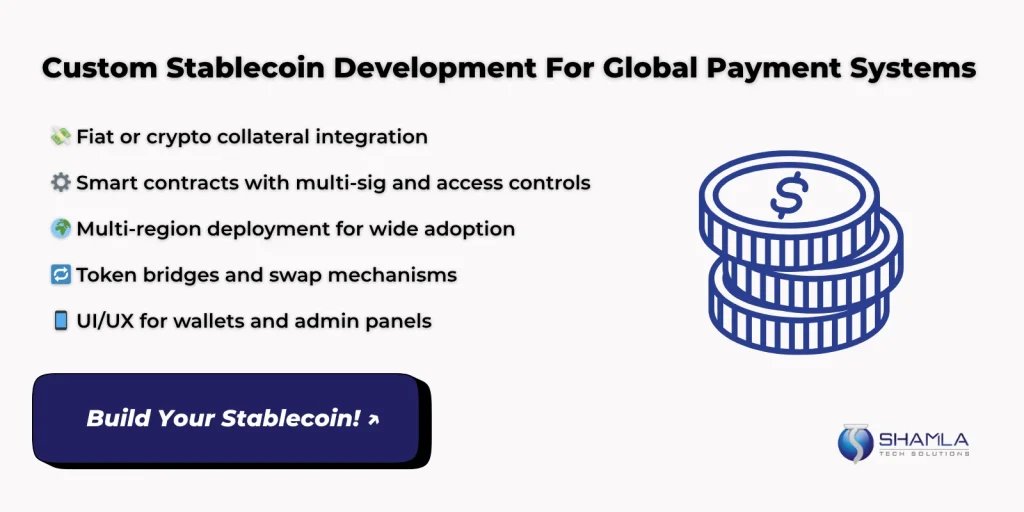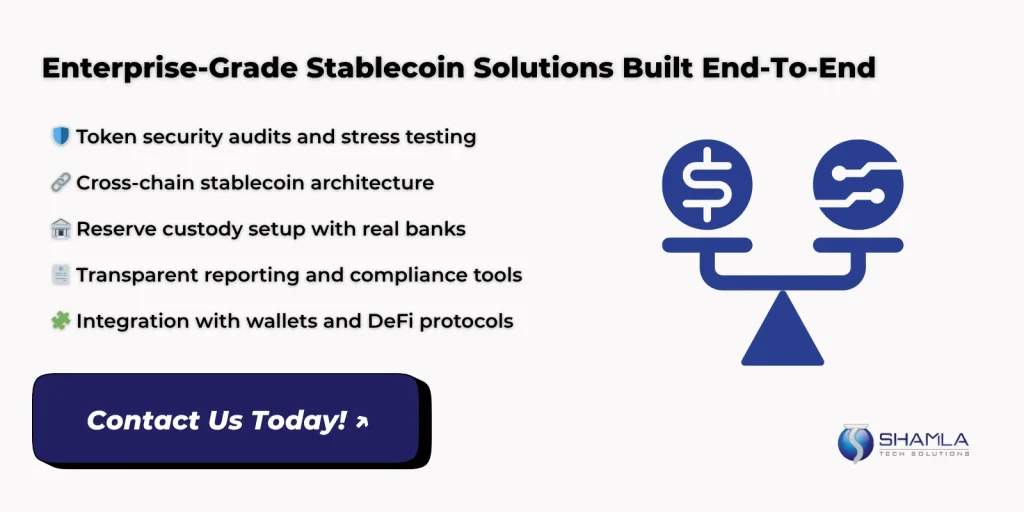Today, stablecoins link digital currency to government-issued cash by matching value 1:1. As more people learn how stablecoins are created, they see a clear path from volatile coins to reliable tokens. This new model challenges banks. By storing reserves in global bank accounts or assets, issuers ensure steady value.
This guide will explain how stablecoins are created in simple steps. With fast transfers and strong protection, stablecoins and money move together seamlessly. A financial shift is underway, reshaping banks and payments systems worldwide. Now, how do these tokens bridge two worlds, and what changes will follow? We’ll answer these questions below.
How Stablecoins Are Created and the Types Involved
1. Collateral Backing Setup
2. Smart Contract Deployment
3. Issuance and Redemption Mechanics
Types of Stablecoin Explained
Development Partners and Tech Choices
Reshaping Money with Stablecoins: Use Cases, Adoption, and Impact
1. Global Payments and Remittances
2. Decentralized Finance (DeFi) Integration
3. Treasury and Corporate Cash Management
4. Leading Coins and Multichain Reach
5. Regulatory and Future Trends
Regulation, Profit Models, and Development Costs of Stablecoins
1. Evolving Rules for Stablecoin Regulation
2. Issuer Revenue: Fees and Reserves
3. Breaking Down Development Expenses
4. Key Services and Cross‑Chain Reach
5. Cost‑Benefit Outlook for Compliant Tokens
Conclusion
Stablecoins have made a big impact on payments, trade, and savings. Tokens tied to cash or assets work like digital cash with firm value. Users move funds instantly, matching blockchain speed with bank stability. This merging paves paths for financial systems to evolve securely and quickly.
Shamla Tech is a stablecoin development company that offers stablecoin development service and has helped clients around the world to build stablecoins. Our experts set fiat reserves, write and test smart contracts, and link tokens to user wallets. We handle audits and compliance, so you see clear reports. We also support cross-chain stablecoin solutions and post-launch monitoring.
Partner with us for reliable stablecoin development services!
Contact us today to get started!





